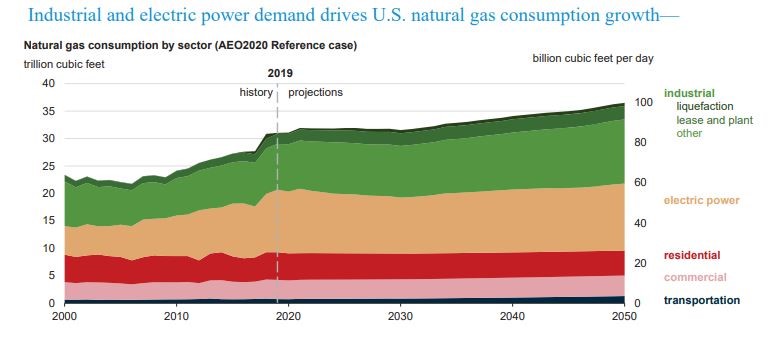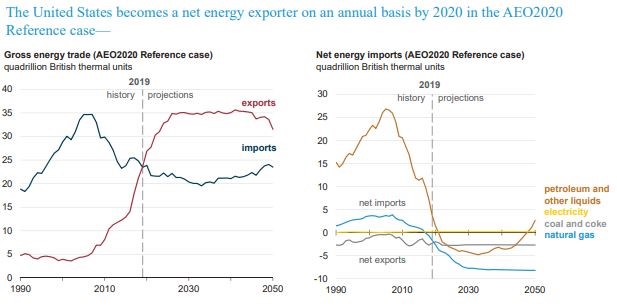The United States will continue to be a global energy leader for decades to come, with the Appalachian Basin driving gains in domestic energy production growth, according to new federal data. As the U.S. remains a global energy superpower, domestic energy exports will increase and consumption among manufacturing and power generation will grow, the U.S. Energy Information Administration said. The report comes just weeks after the EIA revealed that U.S. energy-related CO2 emissions are expected to continue to decrease over the next two years.
Three key takeaways from EIA’s Outlook include:

Appalachian Basin Leads U.S. Natural Gas Production
The EIA forecasts that development of the Marcellus and Utica shale plays will be a key driver behind increased domestic natural gas production. Significant technological advancements and improvements in industry practices led to lower production costs and increases the total volume of oil and natural gas recovery.
“… the United States continues to produce historically high levels of crude oil and natural gas. In the AEO2020 Reference case, because of continued development of tight oil and shale gas resources in the East and Southwest regions, U.S. crude oil production continues to set annual records through the mid-2020s and natural gas production grows through 2050.”
Industrial, Electric Power Demand Drives U.S. Natural Gas Consumption Growth
“Relatively low U.S. natural gas prices in the AEO2020 Reference case lead to continued growth in natural gas consumption in the near term, particularly in the electric power sector,” the EIA reports.
Given domestic production growth, clean-burning natural gas could power up to 51 percent of electrical generation. Large consumers of natural gas, American manufacturers will continue to leverage abundant natural gas for growth. In fact, according to a McKinsey & Co. report, the region could experience over 100,000 jobs, $60 billion in Pennsylvania GDP growth and billions more in state tax revenue.

The United States Continues to be a Net Exporter of Natural Gas
American energy will continue to aid in powering our allies abroad. In 2019, the U.S. doubled its amount of LNG export facilities and the EIA expects U.S. LNG-export capacity to continue to serve growing global LNG demand.
“With continued technologically enabled growth in domestic oil and natural gas production, we see the United States remaining a net exporter of energy for some time,” EIA Administrator Linda Capuano said.
Pipeline exports to Mexico and LNG exports to world markets are expected to increase. The EIA expects U.S. LNG-export capacity to continue to serve growing global LNG demand, particularly in emerging Asian markets.





